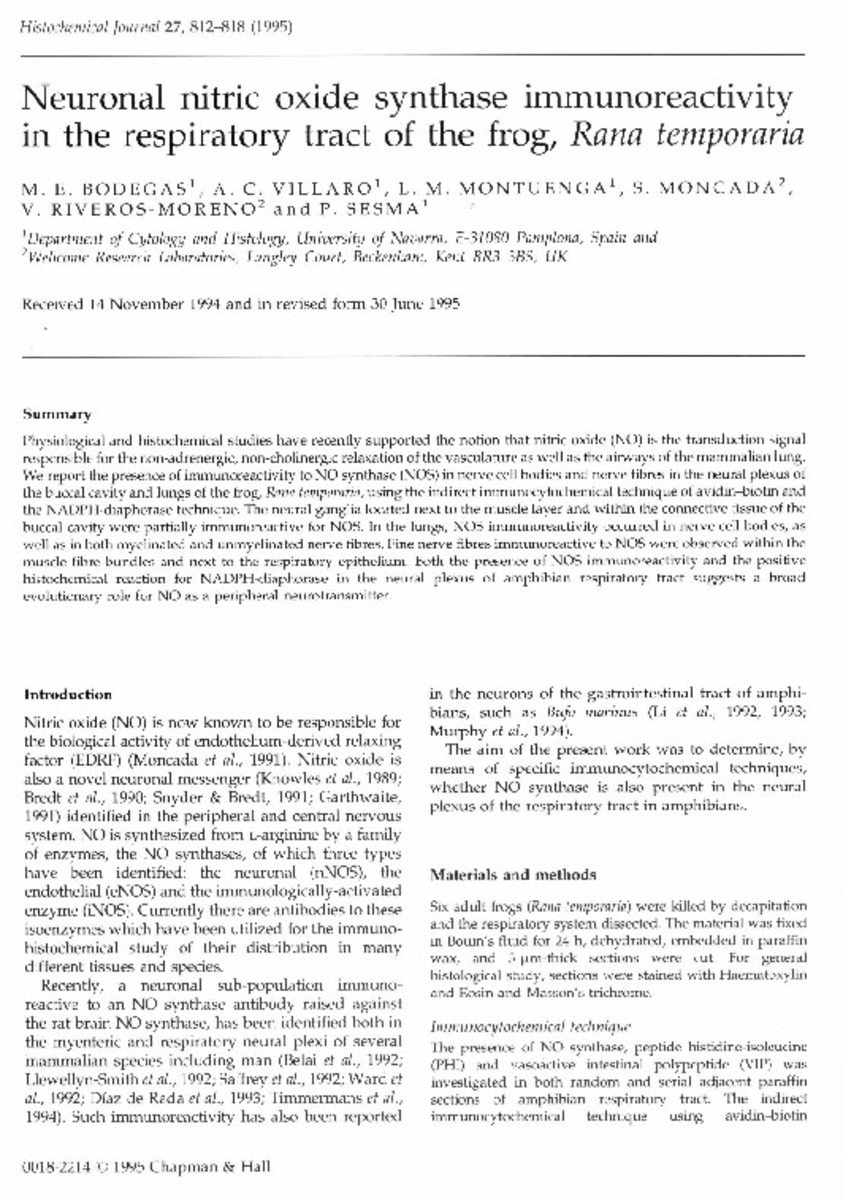Neuronal nitric oxide synthase immunoreactivity in the respiratory tract of the frog, Rana temporaria
Keywords:
Neurons/enzymology
Nitric Oxide Synthase/analysis
Respiratory System/enzymology
Publisher:
Springer Verlag
Citation:
Bodegas ME, Villaro AC, Montuenga LM, Moncada S, Riveros-Moreno V, Sesma P. Neuronal nitric oxide synthase immunoreactivity in the respiratory tract of the frog, Rana temporaria. Histochem J 1995 Oct;27(10):812-818.
Statistics and impact
0 citas en

0 citas en

Items in Dadun are protected by copyright, with all rights reserved, unless otherwise indicated.










